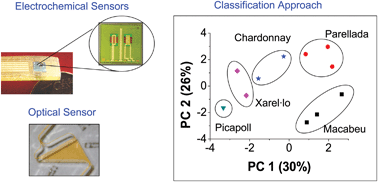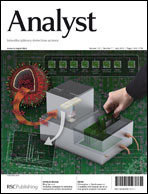A multiparametric system able to classify red and white wines according to the grape varieties and for analysing some specific parameters is presented. The system, known as hybrid electronic tongue, consists of an array of electrochemical microsensors and a colorimetric optofluidic system. The array of electrochemical sensors is composed of six ISFETs based sensors, a conductivity sensor, a redox potential sensor and two amperometric electrodes, an Au microelectrode and a microelectrode for sensing electrochemical oxygen demand. The optofluidic system is entirely fabricated in polymer technology and comprises a hollow structure, air mirrors, microlenses and self-alignment structures. The data obtained from these sensors has been treated with multivariate advanced tools; Principal Component Analysis (PCA), for the patterning recognition and classification of wine samples, and Partial-Least Squares (PLS) regression, for quantification of several chemical and optical parameters of interest in wine quality. The results have demonstrated the utility of this system for distinguishing the samples according to the grape variety and year vintage and for quantifying several sample parameters of interest in wine quality control.

You have access to this article
 Please wait while we load your content...
Something went wrong. Try again?
Please wait while we load your content...
Something went wrong. Try again?


 Please wait while we load your content...
Please wait while we load your content...